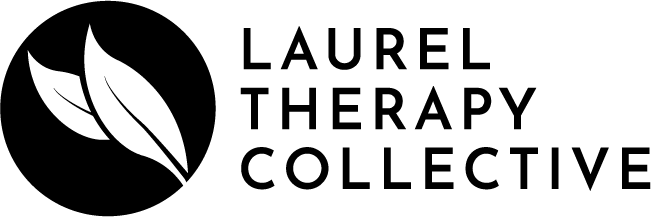Anxiety v. OCD: What’s The Difference?
It’s not uncommon to hear people mistakenly use “anxious” and “OCD” interchangeably. Maybe someone says they’re “so OCD” because they like things neat, or they describe their worries as obsessive. But while anxiety and Obsessive-Compulsive Disorder (OCD) can look similar on the surface, they’re very distinct mental health conditions. They have different patterns and needs for treatment. And unfortunately, even a lot of therapists can't distinguish them unless they have specialized training.
Here's how anxiety and OCD differ and what they have in common.
What Is Anxiety?
Anxiety is a natural human response to stress or perceived danger. It can show up as worry, nervousness, physical tension, or a racing mind. For some people, anxiety becomes chronic and disrupts daily life—this is when it might meet the criteria for an anxiety disorder.
Symptoms of anxiety might include:
Excessive worry about the future
Restlessness or feeling on edge
Difficulty concentrating
Muscle tension or stomach issues
Sleep disturbances
Anxiety often centers around real-life concerns—work, relationships, health, or finances—and tends to be broad and general. Some people with anxiety have panic attacks, but you don't need to have panic attacks to have anxiety.
What Is OCD?
Obsessive-Compulsive Disorder (OCD) is a mental health condition involving intrusive, unwanted thoughts (obsessions) and repetitive behaviors or mental acts (compulsions) aimed at reducing the distress those thoughts cause.
Common obsessions include:
Fear of harming others (without wanting to)
Fear of contamination
Doubts about whether something was done “right” (locking doors, sending emails, etc.)
Intrusive taboo thoughts (violent, sexual, or religious in nature)
Common compulsions include:
Repeated checking, washing, or arranging
Counting, tapping, or repeating phrases
Seeking reassurance from others
Mentally reviewing past events or avoiding certain thoughts
It’s important to note: not all compulsions are visible. Some people with OCD engage in mental rituals—like repeating words silently, mentally reviewing events, or trying to "neutralize" a thought with another thought. This is often referred to as Pure O OCD, short for “purely obsessional,” though compulsions are still present—they’re just harder to spot.
12 Common OCD Themes
OCD is, to be quite frank, a big jerk. It often goes after the things that are most important to the person experiencing it. Here are some of the areas OCD can manifest.
Contamination OCD
Fear of germs, dirt, illness, or chemicals—may involve excessive cleaning or avoidance. It may also manifest as issues with food, medication, vaccines, etc.
Checking OCD
Fear of causing harm or making a mistake—leads to repeated checking (locks, stoves, emails, etc.).
Harm OCD
Intrusive thoughts of accidentally or intentionally harming others, even without any desire to do so. People with harm OCD are some of the safest people to be around, but they don't believe that.
Sexual Orientation OCD (SO-OCD)
Distressing doubts about one’s sexual orientation, even when there’s no change or desire.
Relationship OCD (ROCD)
Obsessions about a partner’s "rightness," compatibility, or one’s feelings of love. This can lead to excess confessing, expressing doubt, or flip flopping on relationship decisions.
Religious or Scrupulosity OCD
Fear of being sinful, immoral, or offending a higher power—leads to excessive praying or moral rumination.
Sexual OCD
Intrusive, unwanted sexual thoughts—can involve taboo themes like incest, p*doph!lia, or bestiality (not acted upon or desired).
Magical Thinking OCD
Belief that certain actions, numbers, or thoughts will cause or prevent unrelated negative outcomes.
Symmetry and Order OCD
Need for things to feel “just right”—may involve arranging, counting, or tapping rituals.
Health OCD (Hypochondriasis)
Obsessive fear of having or getting a serious illness—leads to body checking, reassurance-seeking, excessive medical engagement, or avoiding doctors.
Key Differences Between Anxiety and OCD
OCD
Intrusive thoughts + compulsions to reduce distress
Often irrational or highly specific fears
Repetitive rituals or mental compulsions
OCD relief is temporary and reinforces the compulsion cycle
Person typically recognizes compulsions are not helpful
Anxiety
Excessive worry about real-life situations
Broad, often based on realistic concerns
Avoidance, rumination
Anxiety may lessen with distraction or reassurance
Person often knows the fear is exaggerated or irrational
Common Misconceptions About OCD
OCD is one of the most misunderstood mental health conditions. Here are a few myths we’d love to clear up:
“OCD is just about being clean or organized.”
Nope! While contamination fears can be part of OCD, many people with OCD have obsessions that have nothing to do with cleanliness.
“If you can’t see compulsions, it’s not OCD.”
Many people with OCD have mental compulsions like reviewing, praying, or neutralizing thoughts in their mind.
“People with OCD enjoy being in control.”
Actually, OCD feels out of control. The rituals or mental acts are done to relieve anxiety, not because they bring joy.
“We all have a little OCD.”
While many people like things a certain way, true OCD causes significant distress and impairment in daily life.
Finding the Right Support
Whether you're dealing with persistent anxiety, intrusive thoughts, or exhausting mental loops, you're not alone—and you're not broken. The right therapeutic support can help you gain tools to quiet your mind, challenge unhelpful patterns, and build more freedom in your daily life.
We provide specialized therapy for anxiety using evidence-based approaches like Cognitive Behavioral Therapy (CBT), Exposure and Response Prevention (ERP), and EMDR for trauma-informed care.
Ready to feel more grounded and in control?
Schedule a free 15-minute consultation with a therapist in California today.


























